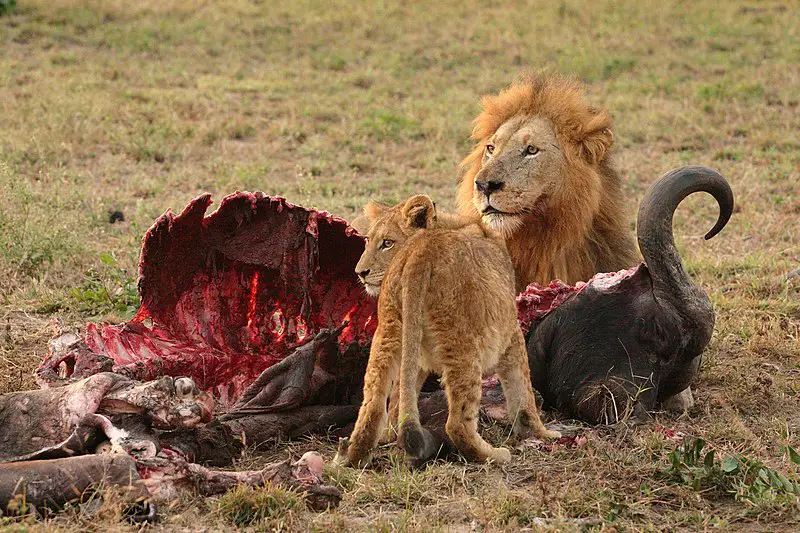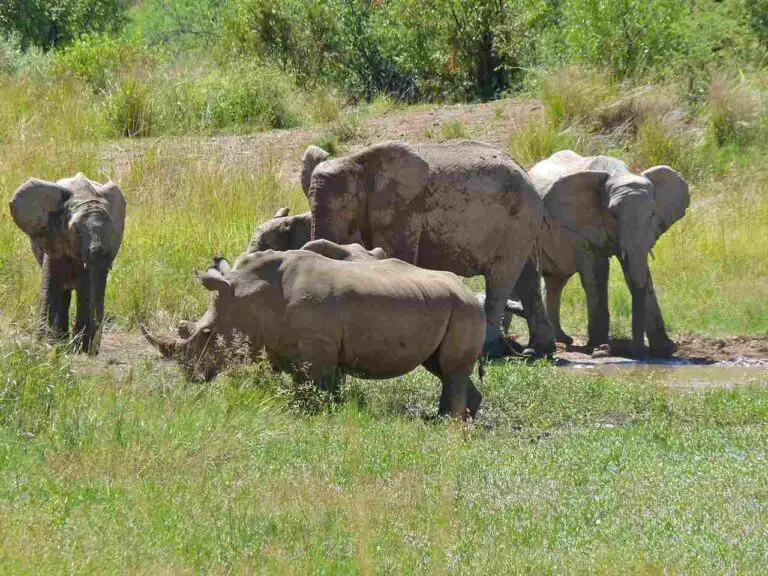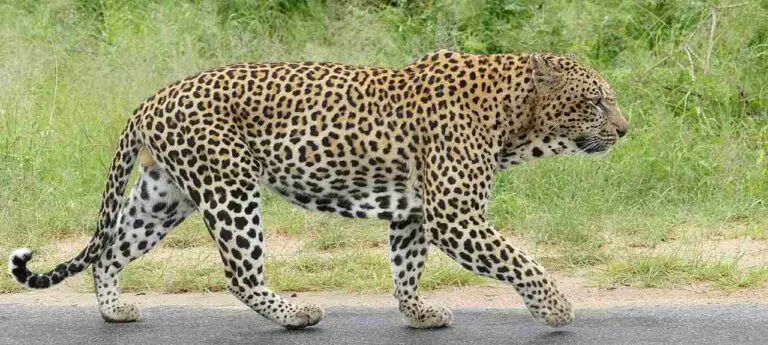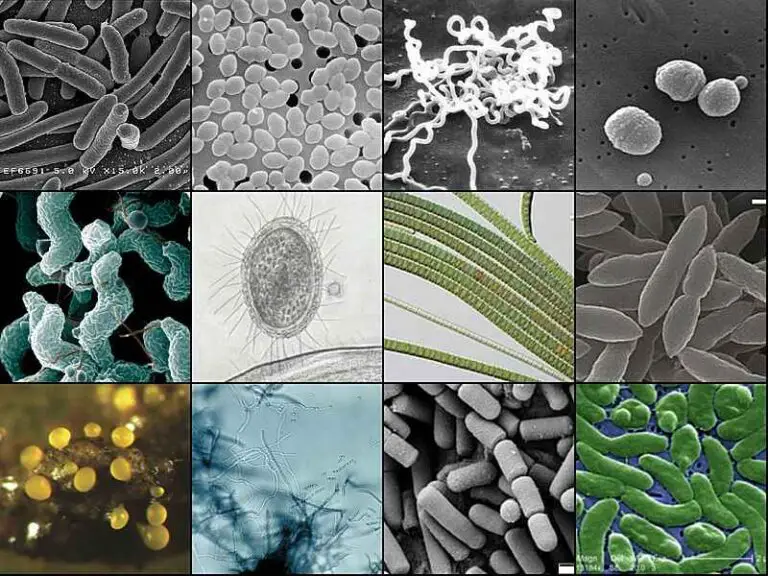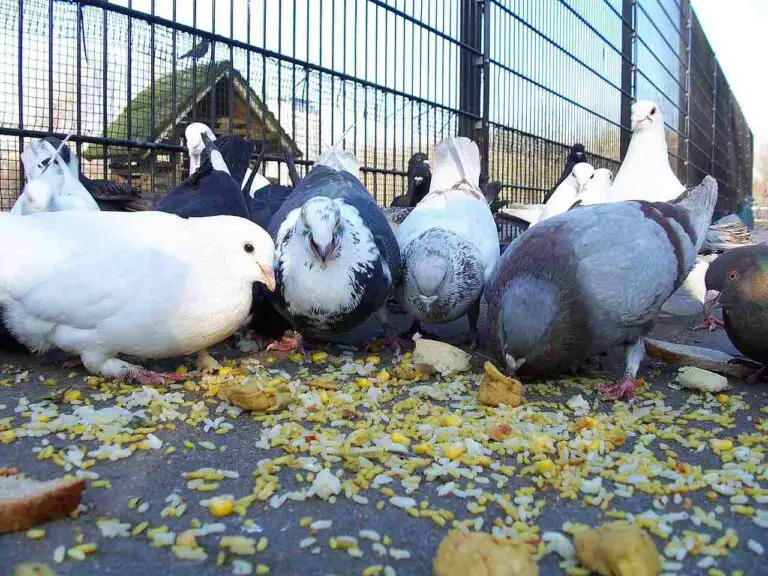5 Biotic Factors in the Savanna Ecosystem Discussed
Biotic factors in the savanna ecosystem are; autotrophs, herbivorous primary consumers, secondary and tertiary consumers, organic biomass, and biological processes.
This article discusses biotic factors in the savanna ecosystem, as follows;
1). Autotrophs (as one of the Biotic Factors in the Savanna Ecosystem)
Autotrophs in the savanna are also referred to as producers, or primary producers.
These organisms are very important because of their role in the savanna food chain as producers of both biomass and bioenergy.
In aquatic ecosystems like freshwater lakes and marine biomes, autotrophic organisms include a broad range of genetically and physiologically diverse organisms like algae, photosynthetic bacteria and seaweed.
On the other hand, being a terrestrial ecosystem, the autotrophic population of the savanna is overwhelmingly dominated by vascular plants.
Types of plants in the savanna are mainly grasses, along with shrubs and (relatively few) trees.
The unique physicochemical and climatic conditions of the savanna imply that autotrophic organisms in this ecosystem must have some adaptive features to enable them survive and thrive.
Characteristics of plants in the savanna are; seasonal leaf shedding, deep tap-root system, thick bark, and self-protective features like spines [5].
These characteristics are the results of multiple generations of adaptation to the environment, and they are designed to perform various functions that include; anchorage, water conservation, and protection from predators.
Many savanna regions are subjected to conditions similar to the semiarid conditions of some deserts. The growth pattern or distribution of trees in the savanna ecosystem is sparse, so that it may be described as an open-canopy distribution/structure, as different from the closed-canopy structure of forest ecosystems.
As primary producers, these plants serve as a direct or indirect source of food for all heterotrophic consumers in the savanna ecosystem.
Examples of producers in the savanna ecosystem are; grasses like Bermuda, lemon grass, Rhodes grass, star grass; trees like Baobab; Manketti, Jackalberry, Whistling Thorn, Candelabra, Acacia, and Gum Arabic trees; as well as some species of shrub plants.

2). Herbivorous Primary Consumers
Primary consumers in the Savanna are exclusively herbivorous animals that feed directly on the producers (plants).
They constitute a very important biotic factor in the savanna ecosystem, by acting as a bridge for bioenergy transfer between producers and non-herbivorous consumers.
Herbivores in savanna regions are a particularly dominant group of organisms, because they have access to large supplies of plant biomass which serves as their source of nutrition.
There are several species of herbivores in the savanna [3], which are similar in terms of their basic adaptations for survival in their habitat.
Examples of herbivores in the savanna are; locusts, giraffes, buffalos, gazelles, zebras, elephants, wildebeests and ostriches.
3). Secondary and Tertiary Consumers (as one of the Biotic Factors in the Savanna Ecosystem)
Secondary consumers in an ecosystem are heterotrophic organisms with carnivorous feeding habits, which prey directly on primary consumers (herbivores), and fall prey to larger, less-vulnerable tertiary consumers.
Both secondary and tertiary consumers have carnivorous dietary characteristics. However, tertiary consumers in any ecosystem tend to be more biologically-evolved than secondary consumers, for their role as predators.
The result of this is a greater predatory advantage for tertiary consumers, so that they can feed on other consumers at the primary and secondary trophic levels.
This predatory advantage may occur in various forms, including larger physical size, sharper sensitivity, and high-altitude hunting (as is the case for raptors like the hawk).
In some cases, scavenging behavior can classify a predator as tertiary consumer; since it enables such a predator to depend on other consumers as food sources.
Secondary consumers in the savanna grassland are frogs, snakes, lizards, foxes, wild dogs and jackals.
Among these, the smaller reptiles and amphibians like lizards and frogs respectively, feed on herbivorous insects like grasshoppers and locusts. As a result they are described as being insectivorous in nature.
Other secondary consumers in the savanna, like snakes, foxes and jackals; may feed on mammalian herbivores, although their dietary range is mostly limited to their physical capacity to subdue prey. This can be observed in the preference of foxes for herbivorous rodents like the mole rat.
Tertiary consumers in the savanna grasslands are larger and/or less-vulnerable predators than the secondary consumers. In some cases, a fourth class of consumers called; quaternary consumers may be included in the savanna biosphere; depending on the level of biodiversity, species richness and complexity of a specific ecosystem being studied.
Examples of tertiary consumers in the savanna are; cheetahs, lions, hyenas and vultures.

4). Organic Biomass
Major resources in the savanna are biomass, soil, and energy; which span across both biotic and abiotic aspects of the ecosystem.
The ultimate source of energy in the savanna is solar radiation; also called solar energy or solar electromagnetic radiation.
Solar radiation occurs in two forms; heat and light; which are simultaneously transmitted by radiant energy-transfer, as solar rays strike the Earth's surface.
This energy is stored in plant biomass through photosynthesis, so that biomass in the savanna can be seen as a renewable energy resource, whose stored-energy is released through biodegradation, digestion or combustion.
Biomass is also a natural reserve for organic carbon, which is derived from carbon dioxide (CO2) through photosynthesis. Its production and decomposition are important steps in the carbon cycle process for all ecosystems, because they represent the storage and release of carbon respectively.
A tool for analyzing the concentration and trophic-distribution of biomass in the savanna is the biomass pyramid; which outlines relative amounts of total dry biomass at various trophic levels of the savanna biosphere.
The estimation of total biomass in tropical savanna grasslands can be done using advanced, non-destructive methods like multi-spectral remote sensing [1].
Several analyses of biomass distribution in the savanna have revealed significant amount of biomass at the primary consumer level [4] [2], which can be attributed to the presence of large herbivorous mammals in grasslands (including temperate grasslands like prairies).
While it is not conventional for biomass to be listed among biotic factors in any ecosystem, their categorization as such is justified by the fact that biomass is organic in origin, composition and function.
5). Biological Processes (as one of the Biotic Factors in the Savanna Ecosystem)
One of the characteristics of savanna ecosystem is a relatively-high level of biological productivity.
Biological processes constitute one of the biotic factors in the savanna ecosystem, because they determine the biological productivity and distribution of resources in the biosphere of the ecosystem.
Examples of such relevant biological processes are photosynthetic biomass-production, feeding, reproduction and biodegradation. Some of these processes; like feeding, go a long way to influence the environmental impacts of organisms on their habitat, as well as the trend of adaptation of these organisms to environmental conditions.
Because biological processes are designed to achieve continuous resource-recycling and sustainability, the interference of human activities with these processes can lead to degradation of soil and other biotic/abiotic aspects of savannas [6].

Conclusion
Biotic factors in the savanna ecosystem are;
1. Autotrophs
2. Herbivorous Primary Consumers
3. Secondary and Tertiary Consumers
4. Organic Biomass
5. Biological Processes
References
1). Chapungu, L.; Nhamo, L.; Gatti, R. C. (2019). "Estimating biomass of savanna grasslands as a proxy of carbon stock using multispectral remote sensing." Remote Sensing Applications Society and Environment 17(6):100275. Available at: https://doi.org/10.1016/j.rsase.2019.100275. (Accessed 4 May 2023).
2). Coe, M. J.; Cumming, D. H.; Phillipson, J. (1976). "Biomass and production of large African herbivores in relation to rainfall and primary production." Oecologia. 1976 Dec;22(4):341-354. Available at: https://doi.org/10.1007/BF00345312. (Accessed 4 May 2023).
3). Mac, E. (2019). "What Are the Trophic Levels in the Savanna?" Available at: https://sciencing.com/trophic-levels-savanna-8659442.html. (Accessed 4 May 2023).
4). Mworia, J. K. (2011). "Invasive Plant Species and Biomass Production in Savannas." Biomass and Remote Sensing of Biomass. Available at: https://doi.org/10.5772/16698. (Accessed 4 May 2023).
5). Omer, S. (2015). "Variation in Morphological, Physical and Chemical Constituents of Balanites aegyptiaca Fruit between Geographical Sites." Available at: https://www.semanticscholar.org/paper/Variation-in-Morphological%2C-Physical-and-Chemical-Omer/4bfed7e9c406f54280afe17025f736db41a4a179. (Accessed May 2023).
6). Solbrig, O. T.; Medina, E.; Silva, J. F. (1996). "Biodiversity and Savanna Ecosystem Processes: A Global Perspective." Available at: https://doi.org/10.1007/978-3-642-78969-4. (Accessed 4 May 2023).
